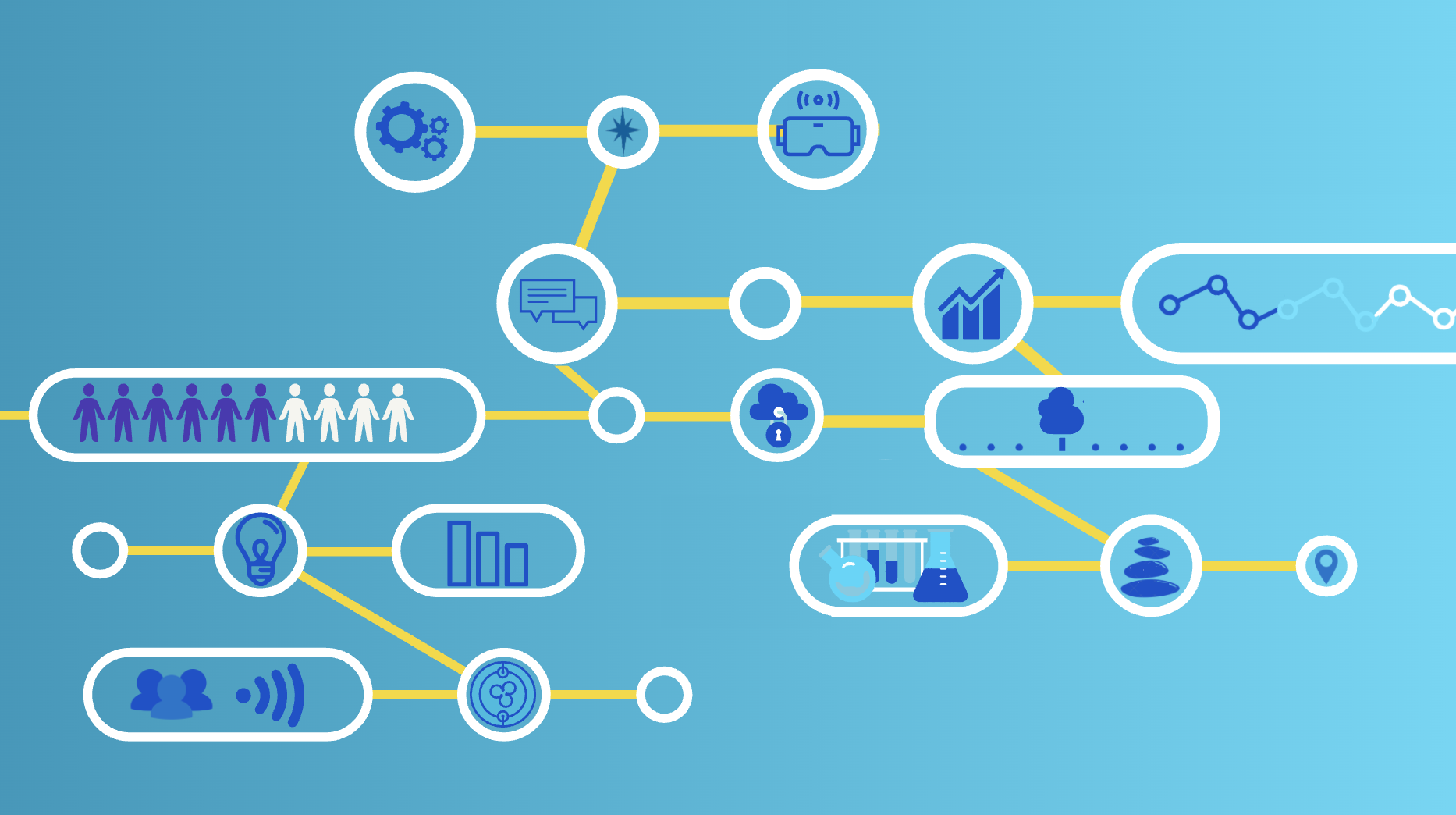The world of tech is one that can be fairly accused of there being too much going on. The collective attitudes towards different technologies ebb and flow and in general, sum up a generic fickleness in the industry - illustrated nicely by Gartner’s Hype Cycle. As tech commentator Ben Evans writes of tech today, “none of them are The Thing, and all of them are full of questions”.
From crypto to the metaverse to NFTs, 2021 saw huge shifts made in new areas. A rush of activity in November saw Facebook rebrand itself to Meta and Microsoft implemented Mesh, with the mission of making “collaboration in the metaverse personal and fun”. For industry participants, these moves signalled obvious change. For other areas in the tech world however, change is harder to define.
Gartner’s famous Hype Cycle gives us a view into the psychology of tech spectators (as well the maturity of different technologies heading our way in the next 5-10 years). The “peak of inflated expectations” is the stage that technologies reach after the “innovation trigger”. It’s a time when early publicity drives up expectations and possibilities for the optimists among us. However, next comes the “trough of disillusionment” where reality hits and interest wanes. By its very nature, the Hype Cycle takes us on a rollercoaster of the constantly changing expectations of upcoming tech.
For business leaders trying to understand the biggest disruptions coming their way, technology poses a massive challenge: its propensity to fundamentally revolutionise industries is huge, and yet pinning down an accurate idea of what to expect from a technology is like trying to nail jelly to a wall (fairly impossible and incorrect estimations can result in quite a bit of mess).
In our 2022 Disruptive Trends Report, our community confirmed this. The number one disruption facing organisations of all industries this year is “the transforming impacts of technology on business and operating models”. Next on the list, we see the changing expectations of customers and workforces causing disruption to business leaders.
The disruptions we face in 2022 stretch far beyond technology - and yet this has a significant chance of transforming the world we live in. But what does all of this mean for business leaders? What else, besides technology, is coming our way this year? Here are some of the top disruptive trends coming up in 2022.
#1 Cybersecurity is a bigger focus than ever before.
2021 saw a record number of ransomware attacks, with some of the most notable including the US Colonial Pipeline and JBS Foods, one of the largest meat processing companies in the world. For the Nimbus Ninety community, cybersecurity technology has shot up in significance this year, with a 53% increase in investment on last year and double the number of respondents considering it to be a disruptive technology.
#2 Strong leadership is the number one success factor for organisations… but poor leadership is success’s biggest barrier.
Strong leadership is considered to be the number one characteristic of agile and resilient businesses in 2022. Indeed, “better leadership” is the most common solution respondents cite when asked what they would change about their organisation’s attitude towards innovation. It has bags of potential as an area to fix for organisations to address, with organisations struggling more with culture over investment as barriers to innovation and digital success.
#3 Environmental action is being pushed down the agenda.
Despite vehement calls to action for businesses made at COP26 in November 2021, “calls for environmental sustainability” are not considered to be a significant disruption, with only 14% of respondents placing it in their top two disruptions for the year. Year on year, environmental sustainability is pushed down to the bottom of business agendas: it is difficult to tell whether this is down to confidence in robust ESG strategies or - more worrying - a brash lack of concern or prioritisation.
#4 Organisations are ramping up the focus on data and analytics.
Getting more value out of data is the number one digital initiative for organisations this year, closely followed by improving the customer experience. We can see this mirrored in investment patterns, with big data analytics topping the list of where organisations are directing their tech spend this year.
#5 Metaverse technologies are gaining more investment.
Augmented reality, mixed reality and virtual reality are inching up investment agendas, with non-fungible tokens entering investment conversations this year. They are also perceived to be slightly more disruptive than they were before. With the metaverse gaining momentum and immersive digital worlds becoming mainstream, we will likely see these technologies shaping the next phase of digital innovation.
Want to learn more? Check out our other content here.





Leave a Comment